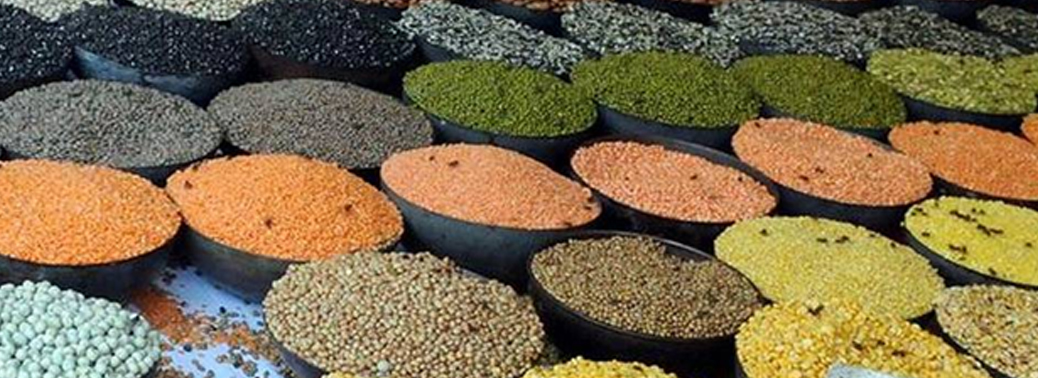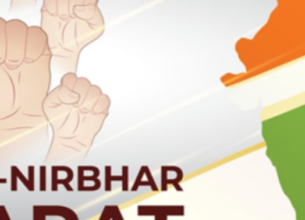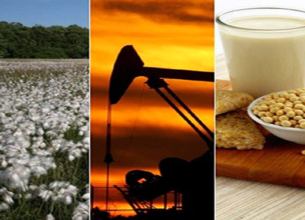GOVERNMENT PROCURED ONLY 3% OF OILSEEDS AND PULSES UNDER PM-AASHA
05, Dec 2019

Prelims level : Agriculture, Ignorance, Subsidy, Marketing
Mains level : GS-III Issues related to direct and indirect farm subsidies and minimum support prices; Public Distribution System - Objectives, Functioning, Limitations, Revamping; issues of buffer stocks and food security; Technology Missions; Economics of Animal Rearing.
Why in News?
- Data from Agriculture Ministry has indicated that only less than 3% of this season’s sanctioned amount of pulses and oilseeds have actually been procured so far under the once-hyped PM-AASHA scheme.
About PM-AASHA:
- The PM-AASHA or Pradhan Mantri Annadata Aay Sanrakshan Abhiyan was announced with great fanfare in September 2018, as an effort to ensure that farmers growing pulses, oilseeds and copra actually get the minimum support prices they are promised for their crops each year.
- Apart from initiatives to allow cash payment to farmers or procurement by private traders, PM-AASHA’s main feature was a price support scheme whereby Central agencies would procure pulses and oilseeds directly from farmers.
- The three schemes that are part of AASHA are:
- The Price Support Scheme (PSS)
- The Price Deficiency Payment Scheme (PDPS)
- The Pilot of Private Procurement and Stockist Scheme (PPPS)
- PSS – Under the PSS, physical procurement of pulses, oilseeds and copra will be done by Central Nodal Agencies.
- Besides, NAFED and Food Cooperation of India will also take up procurement of crops under PSS.
- The expenditure and losses due to procurement will be borne by the Centre.
- PDPS – Under the PDPS, the Centre proposes to cover all oilseeds.
- The difference between the MSP and actual selling/modal price will be directly paid into the farmer’s bank account.
- Farmers who sell their crops in recognised mandis within the notified period can benefit from it.
- PPSS – In the case of oilseeds, States will have the option to roll out PPSSs in select districts.
- Under this, a private player can procure crops at MSP when market prices drop below MSP.
- The private player will then be compensated through a service charge up to a maximum of 15% of the MSP.
- The Centre had budgeted ₹15,053 crore over two years to implement the scheme apart from an additional government credit guarantee of ₹16,550 crore for agencies undertaking procurement.
- It was launched as increasing MSP was not adequate and it is more important that farmers should get full benefit of the announced MSP.
- Crops covered under the Scheme for this Season:
- The main crops covered under the scheme this season are moong, urad, arhar, and groundnut and soya bean.
- The late arrival of the monsoon means that harvests and crop arrivals also began slightly later than expected, especially for arhar or tur dal, so procurement is likely to continue, though tapering, until February.
Issues Associated with the MSP Scheme:
- The scheme provides little to strengthen the procurement mechanism infrastructure in the country which largely only works for two crops – wheat and rice.
- According to a survey conducted by the National Sample Survey Office (NSSO) in the 70th round in 2013, only 6% of farmers are able to sell their produce at MSP.
- A 2017 study found that only 24% households were aware about the MSP of crops grown by them.
- Further, the study found, although MSP is announced for the whole of India, the operation is limited only to few states where the designated government agencies procure the produce from farmers and except for crops like rice and wheat, quantity procured is very limited leading to low level of awareness.
- According to a 2016 NITI Aayog evaluation report 79% farmers were dissatisfied with the MSP regime.
- Some of the reasons for their dissatisfaction were delay in payments, lack of infrastructure at procurement centres, distance to procurement centres and delayed announcement of MSP rates.
- NITI Aayog’s evaluation also found that there were several states where the procurement infrastructure facilities were ‘inadequate’.
What is the Current Issue regarding the PM-AASHA?
- Procurement is still lagging badly in most States.
- The highest sanctioned procurement is in Maharashtra, where 10 lakh tonnes of soya bean procurement were sanctioned, apart from 58,000 tonnes of moong and urad dal. However, barely 1,709 tonnes have been procured in the State so far, including just 14 tonnes of soya bean.
- The highest procurement so far has taken place in Rajasthan, where more than 51,000 tonnes of moong and groundnut have been procured, against a total sanctioned amount of 9.6 lakh tonnes.
- While almost 5 lakh tonnes had been sanctioned in Madhya Pradesh, and 1.18 lakh tonnes in Uttar Pradesh, procurement has not yet begun in either State.










